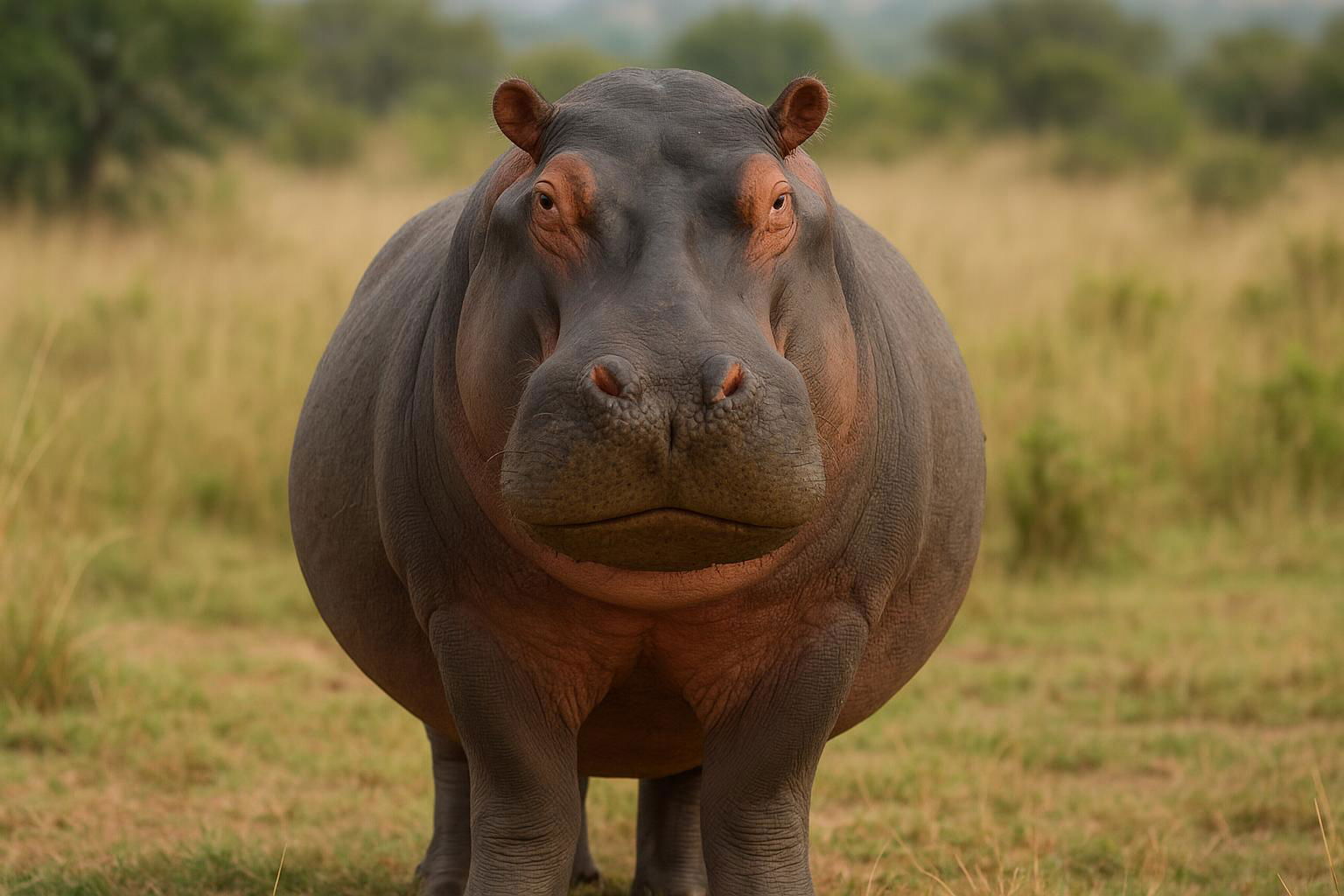
Hippopotamus
Hippopotamus amphibius
The hippopotamus (Hippopotamus amphibius) is a large, mostly herbivorous mammal that resides in sub-Saharan Africa. Noted for its semi-aquatic lifestyle, the hippo is most often found in rivers, lakes, and mangrove swamps, where males maintain territories and groups of females and their young. Despite their comical, bulky appearance, hippos are highly aggressive and considered one of the most dangerous animals in Africa. Adult males, known as bulls, can weigh anywhere between 1,500 to 3,200 kg (3,300 to 7,100 lbs), while females, called cows, are generally lighter.
The hippopotamus has a barrel-shaped body with short legs and a massive mouth capable of opening up to 150 degrees. This mouth houses large tusks made of ivory that can weigh several kilograms, serving as weapons during confrontations. Their skin is nearly hairless, thick, and produces a natural sunscreen of red and orange pigments, sometimes referred to as "blood sweat," though it is neither blood nor sweat.
Hippos are gregarious animals, living in schools or pods, which provide social protection and territorial stability. They are primarily nocturnal grazers, emerging from the water at dusk to feed on grasses, covering a sizeable area in search of food. Though they spend much of their daylight hours in water to keep cool, hippos are excellent swimmers and can hold their breath underwater for around five minutes.
Despite their semi-aquatic nature, hippos are not strong swimmers but often move by pushing off surfaces beneath the water. As both males and females reach maturity around age five or six, their robust communities and intimidating size play an essential role in their largely predator-free existence, save for occasional confrontations with crocodiles, lions, or hyenas. Sadly, the hippopotamus faces threats from habitat loss and poaching, as both their ivory tusks and meat are in demand. Conservation efforts are ongoing to protect these remarkable animals and their habitats.

 All Species & Breeds
All Species & Breeds
 Highland Cattle
Highland Cattle
 Miniature Donkeys
Miniature Donkeys
 All Species Directory
All Species Directory
 Highland Cattle in Virginia
Highland Cattle in Virginia
 Miniature Donkeys in Texas
Miniature Donkeys in Texas












